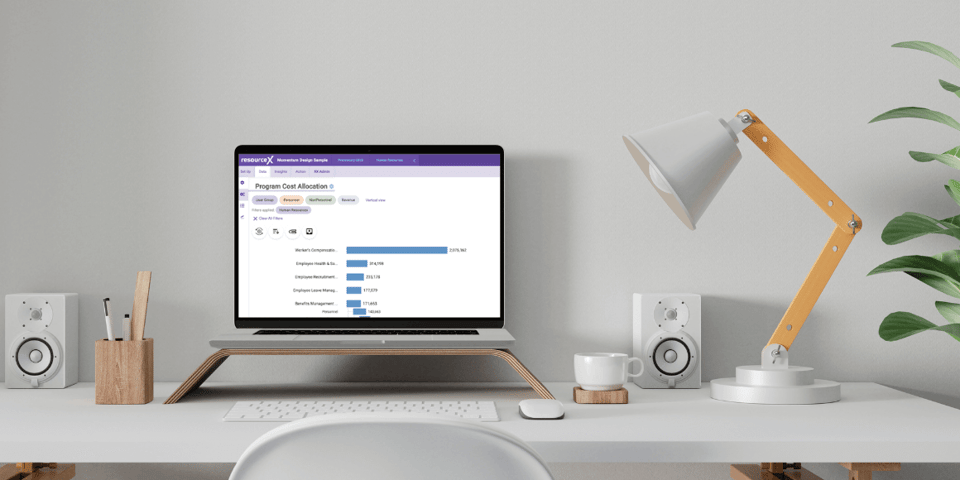The pandemic accelerated technology adoption in many industries, including the government sector. As office closures and stay-at-home orders became widespread, organizations needed a way to keep business operations up and running while prioritizing employee health and safety.
Cloud-based applications and services were already in use before the pandemic. However, the global health crisis cemented the cloud’s standing as an absolute necessity for supporting and streamlining business operations.
Bringing the Cloud to Government Budgeting
Most government agencies don’t have a reputation for being early technology adopters. However, it’s hard to ignore the evidence showing the benefits of cloud-based work solutions.
Even state and local government budgeting departments that traditionally rely on manual processes involving spreadsheets, emails, and in-person meetings are finding value in switching to cloud-based budgeting software solutions.
If you are interested in implementing cloud budgeting software, you need to know what features to look for and how those capabilities will help you reduce costs, streamline processes, and align your budget with the needs of your community.
How State and Local Governments Benefit from Cloud Budgeting Software
When vetting cloud-based budgeting software, look for a solution that provides the following benefits and capabilities:
Accessibility
In the age of remote work, team members and stakeholders aren’t always under the same roof. Keeping budgets and other essential documents on one computer is a productivity killer. These documents must be accessible to all authorized users from anywhere.
The cloud provides 24/7 access to financial statements, analytics, reporting, and forecasting documents that give budget teams the flexibility to plan, revise, and make informed budgetary decisions, no matter where they are located.
Cost Allocation
Many government budget teams are shifting their focus away from line items toward programs, making visibility into cost allocation an important consideration.
The right budgeting software can provide data about the true cost of a program, including how many different people and departments contribute to that program and how funding one program impacts another.
Data-Driven Decision-Making
Data-backed budgeting decisions have a measurable impact on community improvements.
Cloud budgeting software makes it easier to track metrics that show how well program funding aligns with priorities, make adjustments as needed, and take the guesswork out of why funds are allocated to specific programs or services.
Cost Savings
High inflation and supply chain disruptions are driving local governments to look for economical ways to operate and reduce overhead costs.
Software-as-a-service (SaaS) solutions help organizations lower expenses by reducing the total cost of ownership of their IT infrastructure, including personnel, hardware, servers, technology upgrades, data storage, and utilities.
IT Resources
Demand for technology is rising in every industry, so hiring skilled IT staff is both expensive and difficult. In fact, one study predicts there will be a global shortage of more than 85 million tech workers by 2030.
Implementing a cloud-based budgeting solution can help mitigate your IT challenges. Select software designed to empower non-technical users to take over tasks that traditionally require IT intervention. Doing so reduces your need for additional IT staff and frees up the IT resources you do have to work on other projects.
Asynchronous Collaboration
Local government budgets require input and approval from many different people. Managing the workflow manually is time-consuming, inefficient, and error-prone.
Cloud budgeting software with asynchronous collaboration capabilities allows team members and decision makers to work simultaneously on a budget and collaborate across departments. This shortens the budget timeline, streamlines processes, and increases productivity.
Data Security
Data security should be a huge concern for government organizations due to the high volume of personal information stored in their databases.
When vetting cloud budgeting tools, be sure the solution you choose provides security features such as cloud backup and recovery and data encryption.
Automatic Updates
Those pop-up update reminders can be distracting when you’re in the middle of a big project, but they serve an important purpose. Missed patches and skipped updates are common entry points for cyberattacks.
Look for cloud budgeting software that automatically updates and installs security patches when they are released. Doing so will protect your data and ensure all users can access the software’s newest features.
Today’s Local and State Governments Need Cloud Budgeting Software
As the world becomes increasingly technology focused, our budgeting processes have to adapt to keep up. Community needs are changing, so yesterday’s manual budgeting processes don’t provide the insight required to align budgets with essential programs and services.
The right cloud-based budgeting software gives government budget teams the tools they need to make transparent, collaborative, data-backed decisions that support community priorities.
Download our 2021 Annual Impact Report to read how cloud budgeting software is helping cities affect real and impactful change within their communities.








